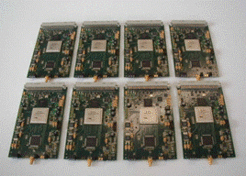HEB mixers - Local Oscillators - Backends
HEB mixers
The upGREAT receivers will be equipped with state-of-the art hot electron bolometer mixers.
For the upGREAT-LFA (1.9-2.5 THz):
- Waveguide based HEB mixers based on NbTiN on SiN membrane (baseline) or NbN on Si membrane (goal) to have larger IF bandwidth (KOSMA)
For upGREAT-HFA: (4.7 THz):
- Waveguide mixers from the KOSMA group or open-structure mixers from DLR-Berlin are being considered.
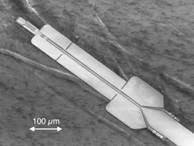
Example of 2.5 THz waveguide HEB mixers using beam-leads (KOSMA)
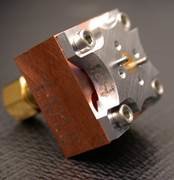
A 2.5 THz waveguide HEB mixer using beam-leads (KOSMA)

Example of 4.7 THz open-structure HEB mixer using a hemispherical lens on a spiral antenna (DLR-Berlin)
Local Oscillators
For upGREAT-LFA:
- The local oscillators are based on photonic mixers. Two tunable LASERs are combined and mixed in a cooled photomixer. Their frequencies are measured with a high resolution wavemeter allowing to frequency lock their difference frequency to a resolution of ~500 kHz. The minimum output powers needed to operate the arrays are in the µW range.
For upGREAT-HFA:
- The local oscillators are based on Quantum Cascade Lasers. Output power in the range of a few 100 µW at 4.7 THz has been demonstrated. The LO will then be coupled via beam-splitter foils and the frequency stabilization can be performed using a gas-cell. Tunability is limited to a few GHz but can be increased using external resonators
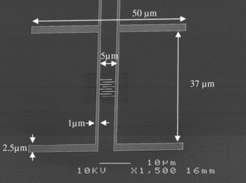
Example of a photomixer with integrated dual-dipole antenna design @1.05THz
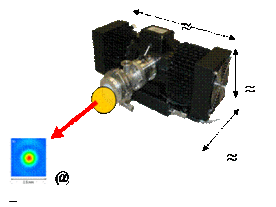
Example of a QCL in a cryocooler. The stirling cooler operates down to ~45K. Output power of a few ~100mW have been demonstrated around 4.75 THz. The beam profile is also shown at the waist position.
Backends XFFTS
The backends for the arrays will consist of Fast Fourier Transform Spectrometers (FFTS), provided by the MPIfR digital group. The current technology allows already having 64k channels to cover IF bandwidths of 0-2.5 GHz. The baseline (goal) is to have 128k channels to cover the IF bandwidth from 0-4 GHz (0-5 GHz). These will allow having velocity resolutions of less than 10 m/s at FIR wavelengths
